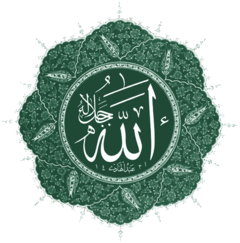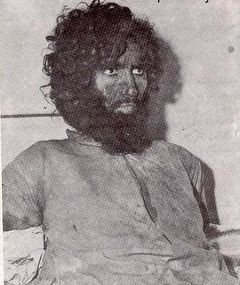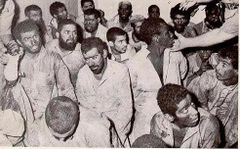Grand Mosque Seizure
| Grand Mosque Seizure | |||||||
|---|---|---|---|---|---|---|---|
|
|||||||
| Belligerents | |||||||
| Islamic dissidents | |||||||
| Commanders and leaders | |||||||
| Juhayman al-Otaibi Abdullah Hamid Mohammed Al-Qahtani |
|||||||
| Strength | |||||||
| ~10,000 Saudi NG | 400-500 Militants | ||||||
| Casualties and losses | |||||||
| 127 killed 451 wounded (Saudi Arabia) |
250 killed 600 wounded 68 executed |
||||||
| Part of the Politics series on |
| Islamism |
|---|
 |
|
Basic topics
Political aspects of Islam
Client state Internationalism Islamic fundamentalism Pan-Islamism Shariah Ummah Antinationalism Postcolonialism |
|
Manifestations
|
Politics portal |
The Grand Mosque Seizure on November 20, 1979, was an armed attack and takeover by armed Islamist dissidents of the Al-Masjid al-Haram in Mecca, Saudi Arabia, the holiest place in Islam. The insurgents declared that the Mahdi, or redeemer of Islam, had arrived in the form of one of the insurgents' leaders, Abdullah Hamid Mohammed Al-Qahtani and called on Muslims to obey him.
The seizure shocked the Islamic world as hundreds of pilgrims present for the annual hajj were taken hostage, and hundreds of militants, security forces and hostages caught in crossfire were killed in the ensuing battles for control of the site. The siege ended two weeks after the takeover began with militants cleared from the mosque.[1]
Following the attack, the Saudi state implemented stricter enforcement of Islamic code.[2]
Contents |
Background
The seizure was led by Juhaiman ibn Muhammad ibn Saif al Utaibi, who belonged to a powerful family of Najd. He declared his brother-in-law Muhammad bin abd Allah al-Qahtani to be the Mahdi, or redeemer of Islam, whose coming at endtimes is foretold in many ahaadith of Muhammad. Although one of the essential signs to know the Mahdi is that he is a descendant of Muhammad, Muhammad bin abd Allah al-Qahtani was not a descendant of the Prophet of Islam, since he belongs to Al-Qahtani tribe. However, the fanatics overlooked this by relying on the fact that Al-Qahtani's name and his father's name are identical to the Prophet's name and father, and they used one of the Prophet's sayings "His and his father's names were the same as Muhammad's and his father's, and he had come to Mecca from the north" to justify their opinion. Furthermore, the date of the attack, November 20, 1979, was the first day of the year 1400 according to the Islamic calendar, which according to another hadith, was the day that the Mahdi would reveal himself.[3]
Juhaiman Saif al Otaibi was from "one of the foremost families of Najd. His grandfather had ridden with Abd al Aziz in the early decades of the century."[4] He was a preacher, a former corporal in the Saudi National Guard, and former student of revered conservative Sheikh Abdel Aziz al Baaz, who went on to become the Grand Mufti of Saudi Arabia. Juhaiman had turned against al Baz, "and began advocating a return to the original ways of Islam, among other things; a repudiation of the West; an end of education of women; abolition of television and expulsion of non-Muslims." [5] He proclaimed that "the ruling Al Saud dynasty had lost its legitimacy, because it was corrupt, ostentatious and had destroyed Saudi culture by an aggressive policy of Westernization."[6]

Otaibi and Qahtani had met while being imprisoned together for sedition, when Otaibi claimed to have a vision sent by God telling him that Qahtani was the Mahdi. Their declared goal was to institute a theocracy in preparation for the imminent apocalypse. Many of their followers were drawn from theology students at the Islamic University in Medina, which was known as a center of the Muslim Brotherhood. Other followers came from Yemen, Kuwait, and Egypt and also included some Muslim African-Americans. The followers preached their radical message in different mosques in Saudi Arabia without being arrested.[7] The government was reluctant to confront religious extremists. Members of the ulema cross-examined Otaibi and Qahtani for heresy, but they were subsequently released as being traditionalists harkening back to the Ikhwan, like Otaibi's grandfather, and not a threat.[8]
Because of donations from wealthy followers, the group was well-armed and trained. Some members, like Otaibi, were members of the National Guard.[9] Some National Guard troops sympathetic to the insurgents infiltrated weapons, ammunition, gas masks, and provisions into the mosque compound over a period of weeks before the new year.[10] Automatic weapons were stolen from National Guard armories, and the supplies were hidden in the hundreds of tiny underground rooms under the mosque that were used as hermitages.[11]
Seizure
In the early morning of November 20, 1979, the imam of the Grand Mosque, Sheikh Mohammed al-Subayil, was preparing to lead the prayers for the fifty thousand worshipers who had gathered for the first prayer of the Islamic year. He was interrupted by insurgents who procured weapons from under their robes, chained the gates shut and killed several policemen.[12] The number of insurgents has been given as "at least 500"[13] and "four to five hundred", which included several women and children who had joined Otaibi's movement.[11]
At the time, the Grand Mosque was being renovated by the Saudi Binladin Group in what was the most prestigious construction contract in the Islamic world. An employee of the organization was able to report the seizure to corporate headquarters before the insurgents cut the telephone lines. A representative of the Binladin Group was thus the first to notify King Khalid.[8]
The insurgents released most of the hostages and locked the remainder in the sanctuary. They took defensive positions in the upper levels of the mosque, and sniper positions in the minarets, from which they commanded the grounds. No one outside the mosque knew how many hostages remained, how many militants were in the mosque and what sort of preparations they had made.
Siege

Soon after the seizure, about a hundred security officers of the Interior Ministry attempted to retake the mosque, and were decisively turned back with heavy casualties. The survivors were quickly joined by units of the Saudi Army and National Guard.
By the evening, the entire city of Mecca had been evacuated. Prince Sultan, then-Minister of Defense, rushed to the city to set up a field command. Sultan appointed his nephew Turki bin Faisal Al Saud, head of the Al Mukhabarat Al A'amah, to take over the forward command post several hundred meters from the mosque, where Turki would remain for the next several weeks. However, the first order of business was to seek the approval of the ulema, which was led by Abdul Aziz bin Baz. Islam forbids any violence within the Grand Mosque, to the extent that plants cannot be uprooted without explicit religious sanction. Ibn Baaz found himself in a delicate situation, especially as he had previously taught Otaibi in Medina. Regardless, the ulema issued a fatwa allowing deadly force to be used in retaking the mosque.[14]
With religious approval granted, Prince Sultan ordered frontal assaults on three of the main gates, preceded by an artillery barrage. The assaulting force was repulsed, and never even got close to breaking through the insurgents' defenses, while snipers continued to pick off members of the security forces whenever they showed themselves. The mosque's public address system was used to broadcast the insurgents' message throughout the streets of Mecca. Confusion reigned at the field command, where several senior princes, the heads of the armed forces and military attachés from France and Pakistan gave contradictory advice. Pakistani troops were rushed to Makkah on Saudi Government's request and Pakistani SSG commandos lead a successful operation afterwards. It is said that the group was commanded by Pervez Musharraf, then the commanding officer of the Group of Pakistani commandos.
In the middle of the day, Prince Sultan ordered helicopters to lower troops on ropes directly into the courtyard in the center of the mosque, which turned out to be a suicide mission. At this point, King Khalid appointed Turki head of the operation.[15]
The insurgents broadcast their demands from the mosque loudspeakers, calling for the cutoff of oil exports to the United States and expulsion of all foreign civilian and military experts from the Arabian peninsula.[16] On November 25, the Arab Socialist Action Party - Arabian Peninsula issued a statement from Beirut alleging to clarify the demands of the insurgents. The party, however, denied any involvement of its own in the seizure.[17]
Three French Commando military experts were stationed in Jeddah to advise security forces, as Non Muslims cannot enter Mecca.
The Pakistanis proposed to end the siege by flooding the mosque and then droppping a high-voltage electric cable to electrocute all present, which was dismissed. Pakistani Commandos then resorted to non-lethal gases in order to subdue the occupiers, and dropped grenades into the chambers through holes drilled in the mosque courtyard. During their operation, the commandos used the least amount of force possible to avoid damage to the mosque, and managed to force the surrender of the surviving insurgents.[18]
The battle had lasted more than two weeks, and had officially left "255 pilgrims, troops and fanatics" killed "another 560 injured ... although diplomats suggested the toll was higher." Military casualties were 127 dead and 451 injured.[19]
The Bin Laden family's alleged involvement
The bin Laden family and business resources were allegedly involved in this conflict. Dr. Daly, an adjunct scholar at Washington's Middle East Institute and author for Jane's Intelligence Review, says, "It has been reported that one of Osama's half brothers was arrested as a sympathizer of the takeover but was later exonerated."
According to Cooperative Research:
In the 1960s Osama bin Laden's half-brother Mahrous bin Laden joined a rebel group opposed to the Saudi government. With his assistance, in 1979 the rebels smuggled weapons into Mecca, Saudi Arabia, using trucks belonging to the bin Laden family company. 500 rebels then seized the Grand Mosque in Mecca (sic), Islam's holiest mosque in its holiest city. They try, but fail, to overthrow the Saudi royal family. All the men who took part are later beheaded except Mahrous. Eventually he is released from prison because of the close ties between the bin Ladens and the Saudi royal family. Mahrous apparently abandons the rebel cause and joins the family business. He is eventually made a head of the Medina branch and a member of the board. He will still hold these positions on 9/11. But a newspaper reports that "his past [is] not forgiven and most important decisions in the [bin Laden family business] are made without Mahrous' input."[20][21][22]
Lawrence Wright reports that the bin Laden family actually provided important assistance in taking back the mosque by providing maps and technical information about the mosque critical in the assault.[23]
Steve Coll's Ghost Wars states that the weapons were transported into the mosque prior to the takeover.[24] Bin Laden company trucks were a common sight in the mosque, as the company won a contract to renovate and modernize the mosque in 1973. The bin Ladens did help the regime during the takeover, by giving Saudi security forces the architectural plans for the site.
Aftermath
In Iran, Ayatollah Khomeini told radio listeners, "It is not beyond guessing that this is the work of criminal American imperialism and international Zionism." [25] [26] Muslim anti-American demonstrations followed in the Philippines, Turkey, Bangladesh, India, eastern Saudi Arabia, the United Arab Emirates and Pakistan.[27] Anger fueled by these rumors peaked within hours in Islamabad, Pakistan, and on November 21, 1979, the day following the takeover, the U.S. embassy in that city was overrun by a mob, who then burned the embassy to the ground. A week later, this anger swept to the streets of Tripoli, Libya, where a mob attacked and burned the U.S. embassy there on December 2, 1979.[28]
Perhaps the most disturbing development to come out of the 1979 takeover of the Grand Mosque was the eventual revelation of prime organizer al-Utaibi's connection to the Saudi Arabian National Guard.
The rebels' leader, Juhayman, was captured, and he and 67 of his fellow rebels—"all the surviving males"—were tried secretly, convicted and publicly beheaded in the squares of four Saudi cities.[29]
See also
- Bin Laden family
- People claiming to be the Mahdi
- Masjid al-Haram (Grand Mosque)
Notes
- ↑ Benjamin, The Age of Sacred Terror (2002) p.90
- ↑ Wright, Sacred Rage, (2001), p.155
- ↑ Benjamin, The Age of Sacred Terror, (2002) p.90
- ↑ Mecca - 1979 Juhaiman ibn Muhammad ibn Saif al Utaibi, globalsecurity.org
- ↑ Wright, Sacred Rage, (2001), p.152
- ↑ Military, Mecca, 1979 Juhaiman ibn Muhammad ibn Saif al Utaibi, globalsecurity.org
- ↑ Wright, Looming Tower, (2006), p.88-9
- ↑ 8.0 8.1 Wright, Looming Tower, (2006), p. 103 - softcover
- ↑ Wright, Looming Tower, (2006), p. 102 - softcover
- ↑ Benjamin, The Age of Sacred Terror, (2002), p.90
- ↑ 11.0 11.1 Wright, Looming Tower, (2006), p. 104 - softcover
- ↑ Wright, Looming Tower, (2006), p. 101 - softcover
- ↑ Mecca - 1979 Juhaiman ibn Muhammad ibn Saif al Utaiba, globalsecurity.org
- ↑ Wright, Looming Tower, (2006), pp. 103-104 - softcover
- ↑ Wright, Looming Tower, (2006), pp. 104-105 - softcover
- ↑ Wright, Looming Tower, (2006), p.92
- ↑ Saudi Opposition Group Lists Insurgents' Demands in MERIP Reports, No. 85. (Feb., 1980), pp. 16-17.
- ↑ Wright, Looming Tower, (2006), p.93
- ↑ Wright, Sacred Rage, (2001), p.148
- ↑ Sunday Herald (Glasgow), 10/7/2001
- ↑ Ha'aretz, 12/18/2002
- ↑ New Yorker, 11/5/2001
- ↑ Wright, Looming Tower, (2006), p.91
- ↑ Coll, Steve (2004). Ghost Wars: The Secret History of the CIA, Afghanistan, and Bin Laden, from the Soviet Invasion to September 10, 2001. Penguin Press. p. 695 pages. ISBN 1594200076. http://books.google.com/books?id=ToYxFL5wmBIC&dq=%22ghost+wars+the+secret+history+of+the+cia+afghanistan+and+bin+laden+from+the+soviet+invasion+to+september+10+2001%22&source=gbs_summary_s&cad=0.
- ↑ On This Day, November 21, BBC
- ↑ "Khomeini Accuses U.S. and Israel of Attempt to Take Over Mosques", by John Kifner, New York Times, November 25, 1979
- ↑ Wright, Robin B., 1948-Sacred Rage : The Wrath of Militant Islam by Robin Wright, Simon & Schuster, c2001, p.149
- ↑ EMBASSY OF THE U.S. IN LIBYA IS STORMED BY A CROWD OF 2,000; Fires Damage the Building but All Americans Escape--Attack Draws a Strong Protest Relations Have Been Cool Escaped without Harm 2,000 Libyan Demonstrators Storm the U.S. Embassy Stringent Security Measures Official Involvement Uncertain, New York Times, December 3, 1979
- ↑ Mecca - 1979 Juhaiman ibn Muhammad ibn Saif al Utaiba
Further reading
- Aburish, Said K., The Rise, Corruption, and Coming Fall of the House of Saud, St. Martin's (1996)
- Benjamin, Daniel, The Age of Sacred Terror by Daniel Benjamin and Steven Simon, New York : Random House, (c2002)
- Fair, C. Christine and Sumit Ganguly, "Treading on Hallowed Ground: Counterinsurgency Operations in Sacred Spaces," Oxford University Press (2008)
- Hassner, Ron E., "War on Sacred Grounds," Cornell University Press (2009) ISBN 978-0-8014-4806-5
- Kechichian, Joseph A., "The Role of the Ulama in the Politics of an Islamic State: The Case of Saudi Arabia", International Journal of Middle East Studies, 18 (1986), 53-71.
- Trofimov, Yaroslav, The Siege of Mecca: The Forgotten Uprising in Islam's Holiest Shrine and the Birth of Al Qaeda, Doubleday (2007) ISBN 0385519257 (Also softcover - Anchor, ISBN 0307277739)
- Wright, Robin B., Sacred Rage : The Wrath of Militant Islam, Simon & Schuster (2001)
- Wright, Lawrence, The Looming Tower: Al Qaeda and the Road to 9/11, New York : Knopf (2006) ISBN 978-0375414862 (Also softcover - New York : Vintage, ISBN 978-1400030842)
|
||||||||||||||||||||